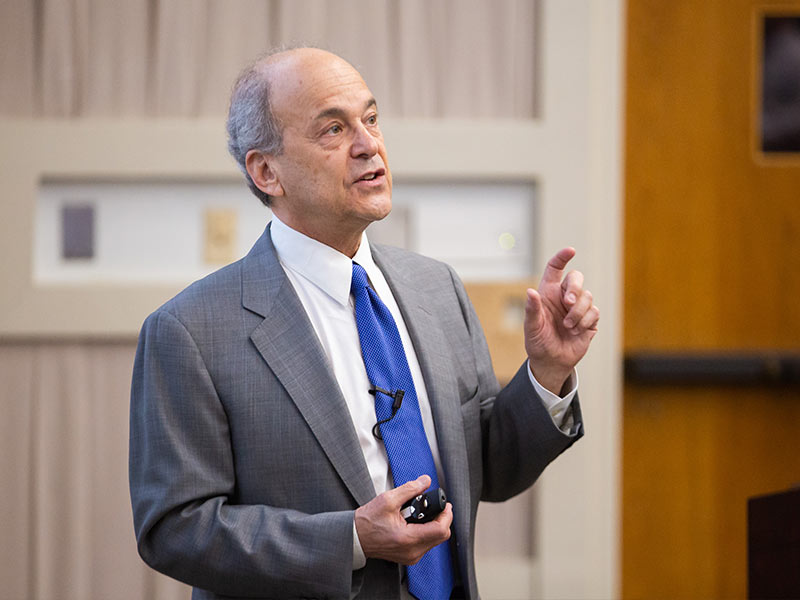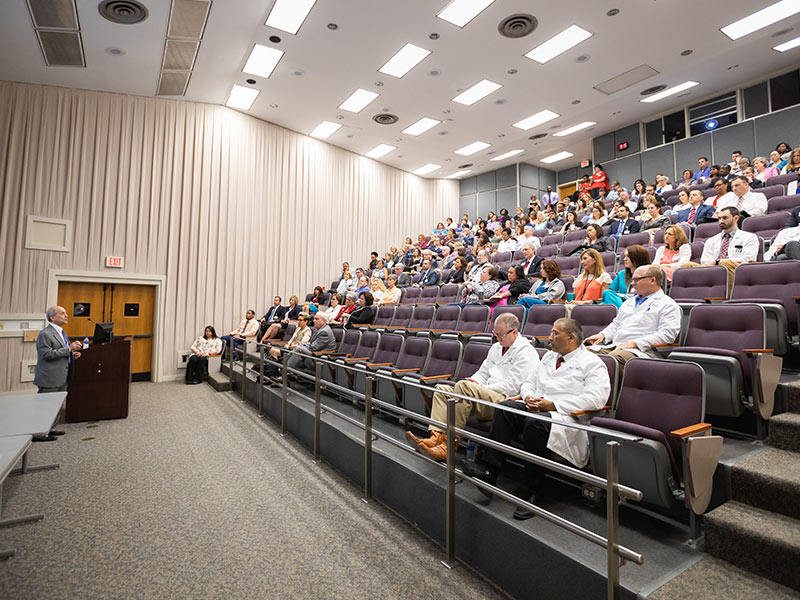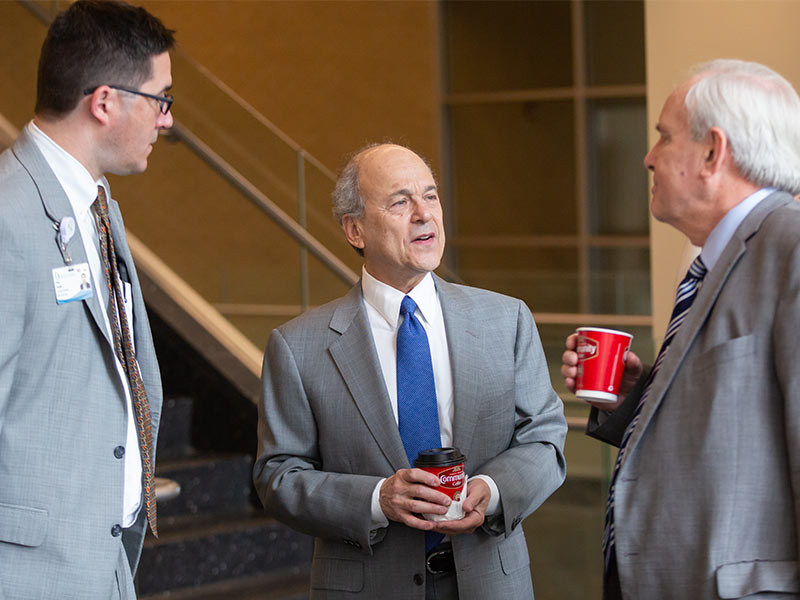How much patient harm is acceptable? Zero, safety leaders say

When the leader of the nation’s top accrediting agency visited the University of Mississippi Medical Center in November 2015, the hospital had very little in the way of a performance improvement team.
Fast forward to now. Dr. Mark Chassin, president and CEO of The Joint Commission, saw and heard a much different mindset on patient care and safety when he visited campus June 18.
“We have a structure in place. We have data transparency, and we have focused metrics toward specific goals and targets” for safety and quality, said Chief Medical Officer Dr. Michael Henderson. “We showed him the Clinical Intranet and the drillability of that, and showed him our Chasing Zero program.”
And, Henderson’s office has made the data public. Go to Clinical Quality on the Medical Center’s website.
Henderson, who came to the Medical Center in March 2015, initially invited Chassin to campus to help kick off UMMC’s high reliability journey modeled on work being done by The Joint Commission. Being a high reliability health care organization means consistently giving all patients quality, safe care. UMMC aspires to reach that gold standards through improving its efficiency, effectiveness, processes, customer satisfaction and culture.
Chassin “was keen to come back to see what’s happening,” Henderson said.
Before giving a grand rounds talk open to the campus at 9 a.m., Chassin met informally over coffee and breakfast with leadership including Vice Chancellor for Health Affairs Dr. LouAnn Woodward, Associate Vice Chancellor for Clinical Affairs Dr. Charles O’Mara, Health System CEO Kevin Cook and Adult Hospitals and Clinics CEO Liz Youngblood.
“You walk into a place, and within a half hour, you know if the place is on the right page or not,” Henderson said of Chassin’s visit. “That’s where you form your opinion on whether the place is making progress or not.”

Chassin’s opinion: The Medical Center is indeed moving forward in its journey toward becoming a high reliability health care organization. “He recognized our progress in talking to people and hearing about some of our work,” Henderson said.
“It was a privilege for UMMC to have Dr. Chassin back to our campus to discuss our progress toward becoming a high reliability organization,” said Dr. Peter Arnold, medical staff chief of staff.
“Dr. Chassin and his team at The Joint Commission have transformed their organization into something much more than an accrediting body. They have become an incredibly positive force of support for health care organizations to provide more efficient, higher quality and safer care for patients.”
The Medical Center, in laying new groundwork for performance improvement, hired Henderson from the Cleveland Clinic, where he served as chief quality officer. Since then, his team and Medical Center leadership have engaged front-line staff and leaders at all levels as part of UMMC’s pledge to keep improving. Henderson is a transplant surgeon by trade and a hospital performance expert.
Before meeting privately with small groups of administrators and performance improvement staff, Chassin spoke to a cross-section of about 200 leadership, faculty and front-line caregivers.
“I’m going to challenge you this morning,” he said. Then, he got to the crux of his message: UMMC must commit to reaching zero patient harm if it hopes to be a high reliability organization.

In his work with The Joint Commission, “we see routine safety processes failing routinely. We have this seeming avalanche of events that are impossible for patients and families to understand. There aren’t any words that are adequate,” Chassin said.
He doesn’t accept arguments by some that the goal is impossible, or that physicians won’t go along because they believe some patient harm is inevitable.
“If zero isn’t the right number, then how much patient harm is OK?” Chassin asked. “The only acceptable answer is zero, and the only acceptable question is, ‘How long will it take us to get there?’”
The Joint Commission’s Center for Transforming Healthcare has training tools to help leadership and front-line caregivers pursue the goal of zero patient harm. Just one example is the Targeted Solutions Tool, called TST, an online application that helps health care organizations solve persistent health care quality and safety problems. There’s a TST for hand hygiene compliance, safe surgery and falls prevention, among others.
For those who say it can’t be done, Chassin gave an example of achievement of zero patient harm in one or more areas using TST. After weathering a problem with mismatched blood samples, Memorial Hermann Health System in Houston used TST to achieve near-perfect hand hygiene compliance and saw some of its hospitals go an entire year without a hospital acquired infection, Chassin said.
Find out where your processes are failing, and use training tools to fix them, Chassin urged. “If I told leaders here that you could increase your bedside nursing time by 25-40 percent without hiring extra employees, would you jump at that?” he asked.
Training, not one project or initiative after another, is the best way to refine processes so that harm events don’t occur, Chassin said. To get there, he said, organizations should embrace robust process improvement, or RPI, a systematic and sophisticated approach to solving complicated problems.
RPI uses process improvement tools known in the industry as Lean and SixSigma, and, most importantly, places an emphasis on systematic change management. Change management is the science that guides how an organization prepares, equips and supports employees to successfully adopt change in order to drive success and outcomes.
“Our center is training hospitals and systems to use RPI to transform to high reliability, and to use RPI to look at tough, intractable safety problems and figure out why we haven’t solved them,” Chassin said.
“The support from the Center for Transforming Healthcare is a critical component of our journey to high reliability,” Arnold said.
Chasing zero is a team sport, Henderson said. “We can’t fix this in isolation. It’s going to take buy-in across the board, and that will take heavy lifting from leadership.”
“We need to get to the point where zero harm is the natural byproduct of the way we take care of patients,” Chassin said. “We (The Joint Commission) have lots of ways to help. I’m delighted that UMMC is on the road to high reliability.”


